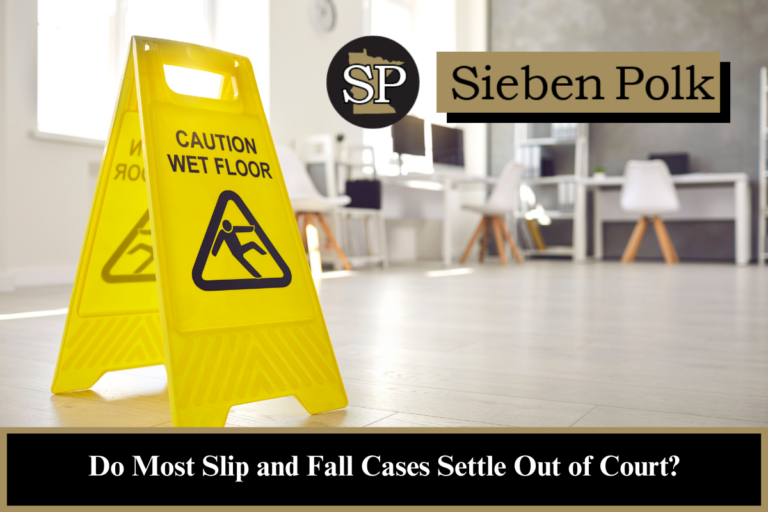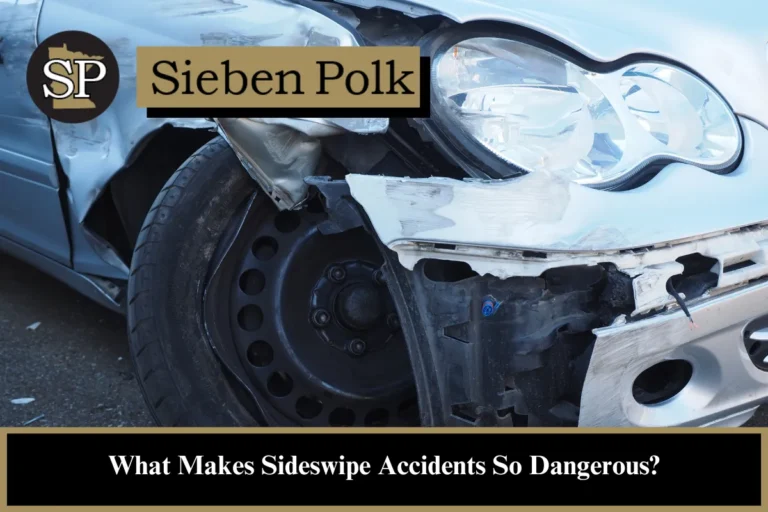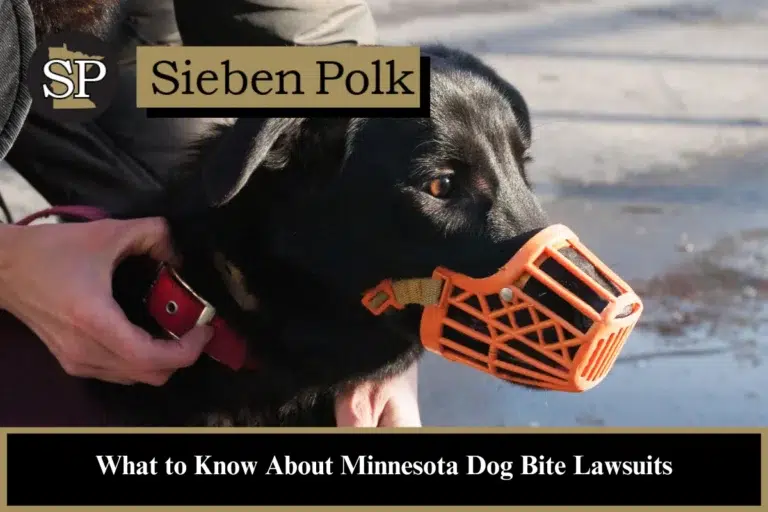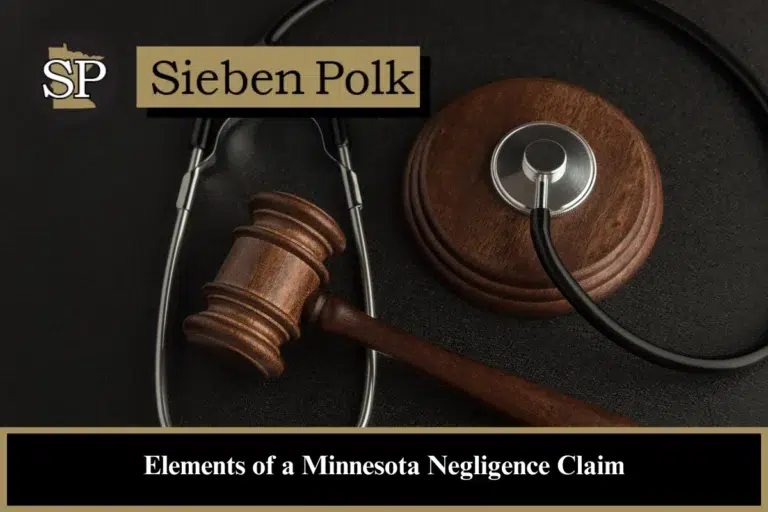If you were injured in a slip and fall accident, a Minnesota slip and fall attorney can help you understand your legal rights and options. Your case could either settle out of court or go to trial. The direction it takes depends on several factors, but regardless, Sieben Polk P.A. is here to help. Contact us for a free consultation.
Navigate This Page
- Do Slip and Fall Cases Usually Settle Out of Court?
- Why Do Most Slip and Fall Cases Settle Out of Court?
- How Can a Slip and Fall Lawyer Help Secure a Better Settlement?
- Important Considerations in Minnesota Slip and Fall Lawsuits
- Will My Slip and Fall Case Go to Trial?
- Why Should I Hire an Experienced Slip and Fall Attorney?
- Contact Sieben Polk P.A. for Your Free Consultation
- Related Reading
Do Slip and Fall Cases Usually Settle Out of Court?
Slip and fall accidents occur when property owners fail to maintain safe conditions on their premises. If you’re injured, you may be entitled to compensation for things like medical bills, lost wages, and pain and suffering. To secure compensation, you’ll typically file a claim with the at-fault party’s insurance company.
What Is a Settlement in a Slip and Fall Case?
A settlement is a contract where both parties agree on compensation in exchange for the victim dropping the right to pursue further legal action. In slip and fall accidents, settlements are common because they offer quicker resolutions compared to a trial.
Why Do Most Slip and Fall Cases Settle Out of Court?
Many slip and fall victims accept the first settlement offer they receive, often without negotiating. Several factors contribute to this:
Lack of Awareness of the Right to Negotiate
Victims may not know they can negotiate for a higher settlement, or they may feel an urgency to settle quickly due to financial concerns.
Overwhelmed by the Claims Process
Dealing with insurance companies can be daunting, especially when you’re focused on recovering from injuries. Many victims settle too early because they want to put the accident behind them, which can result in leaving money on the table.
Insurance Companies’ Strategy
Insurance adjusters often undervalue claims or deny them outright. They are motivated to save money for their company and will seek quick settlements when they believe they might lose in court. If the evidence clearly supports the victim’s case, insurers might prefer to settle quickly rather than face the costs of litigation.
How Can a Slip and Fall Lawyer Help Secure a Better Settlement?
Having an experienced lawyer can significantly increase your chances of a fair settlement. At Sieben Polk P.A., we:
- Investigate the circumstances of your case.
- Gather and preserve all available evidence.
- Negotiate on your behalf for a higher settlement reflecting the full extent of your injuries.
Important Considerations in Minnesota Slip and Fall Lawsuits
Slip and fall cases are typically classified under premises liability law. It is important to consult an attorney with a strong understanding of premises liability in Minnesota.
Will My Slip and Fall Case Go to Trial?
Not all slip and fall cases go to trial. In fact, most are resolved through settlement negotiations. However, sometimes it is necessary to take a case to court to achieve the compensation you deserve. Our skilled attorneys at Sieben Polk P.A. will ensure your case is handled appropriately, whether it settles or goes to trial.
Why Should I Hire an Experienced Slip and Fall Attorney?
While there is no guarantee that your slip and fall case will settle out of court, working with an experienced attorney greatly increases your chances of a favorable outcome. Our team will fight for the full and fair compensation you deserve.
Contact Sieben Polk P.A. for Your Free Consultation
If you or a loved one has been injured in a slip and fall accident in Minnesota, our nationally recognized team is here to help. We offer free consultations and work on a contingency fee basis—meaning you pay nothing unless we win your case. Contact us today at (651) 437-3148 or use our online contact form to get started.




